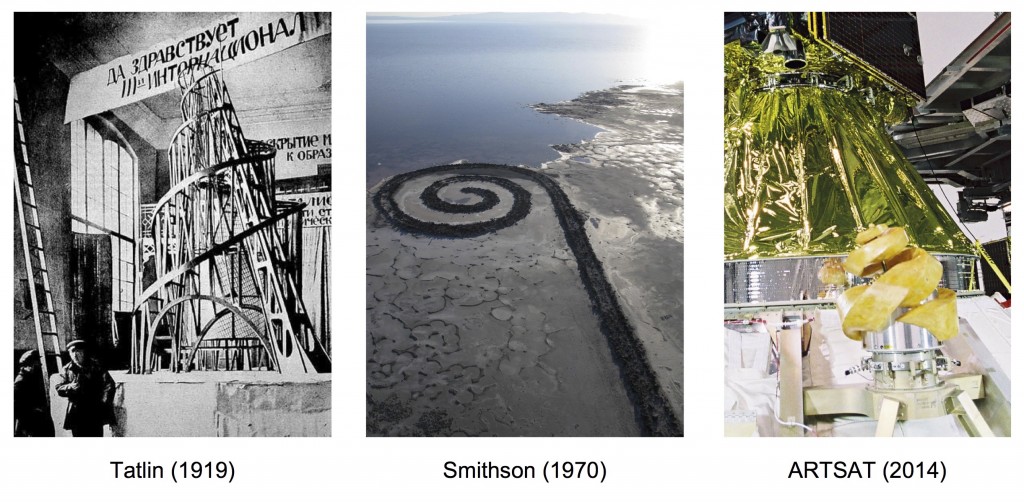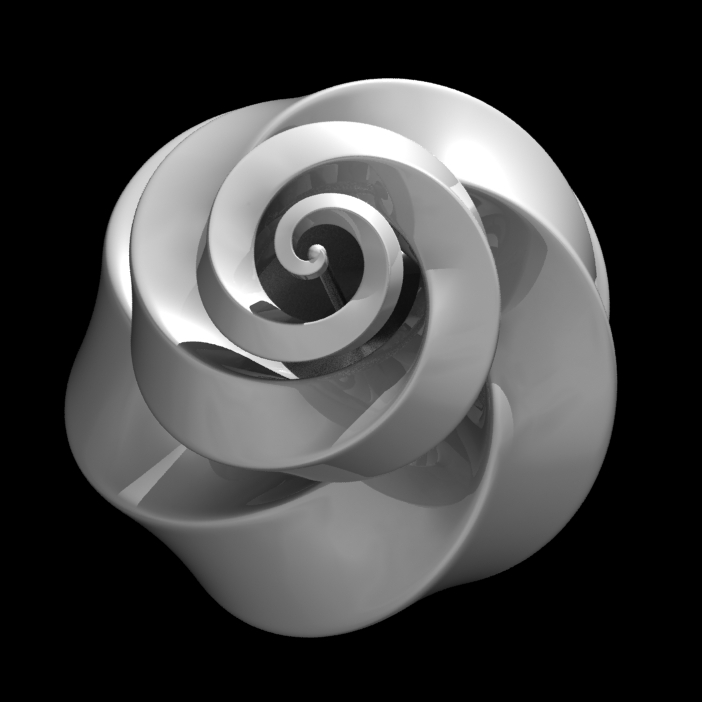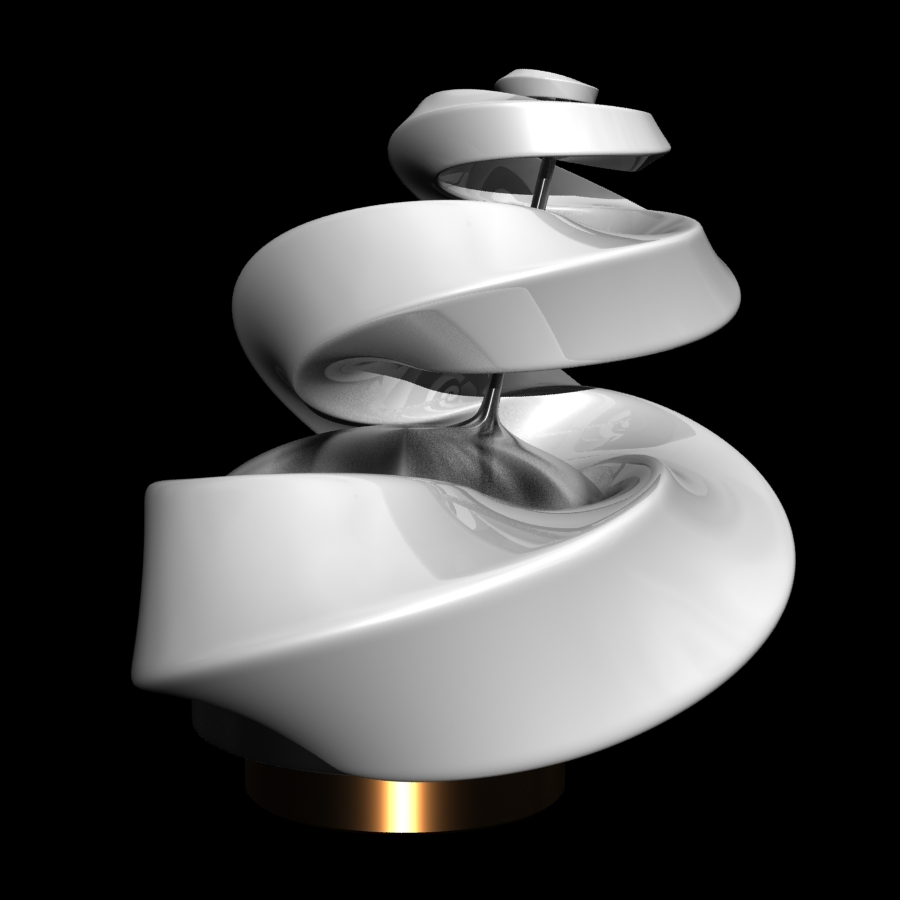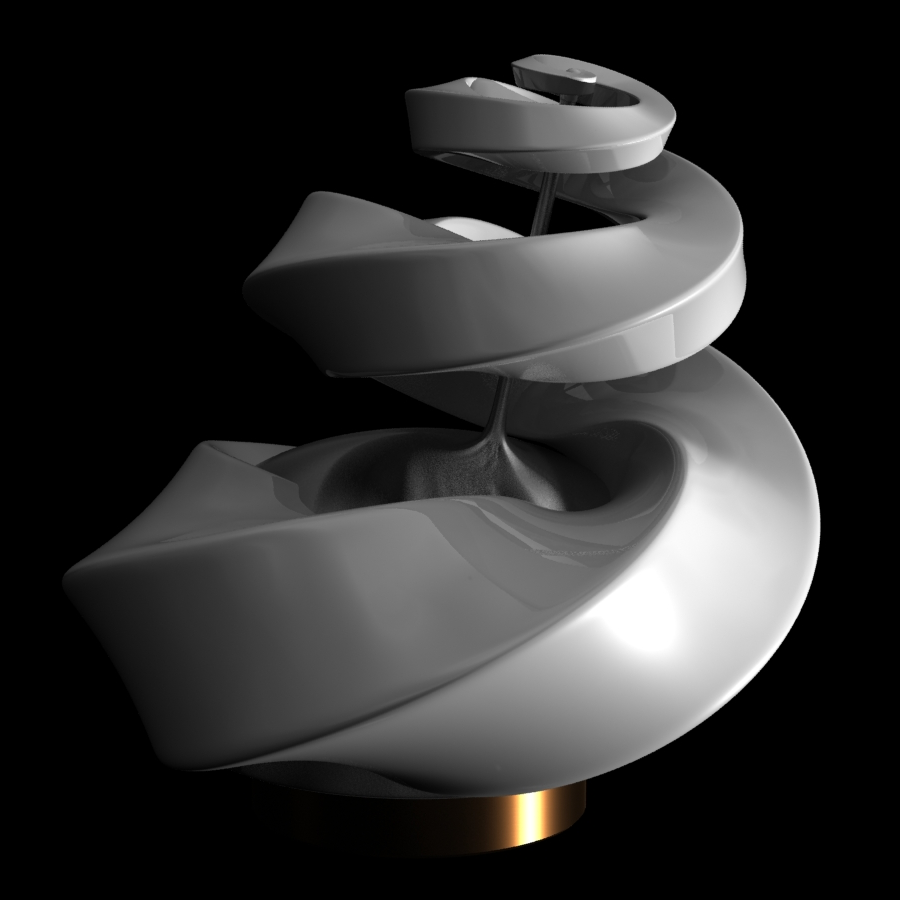Deep Space Sculpture “DESPATCH”
September 2013, “Deep Space Sculpture DESPATCH(*)” was selected as a secondary payload to ride along with the main payload, Hayabusa II, on a JAXA H-IIA launcher planned for launch in the fall of 2013.This probe, the second development in the “ARTSAT: satellite art project”, is a collaborative initiative of Tama Art University and Tokyo University. It’s a small payload – about 50 cm wide and 30 kg — that will be sent into deep space on an Earth-escape trajectory
DESPATCH was successfully launched as a piggy-back payload of the H-IIA launch vehicle (main satellite: “Hayabusa II”) on December 3, 2014. DESPATCH is the world’s first artwork to be inserted into deep space orbit and marks the farthest distance from the Earth as an artwork. DESPATCH’s signal was successfully received from a distance of 4.7 million km (12 times the distance from the Moon), setting the new world distance record for a signal received by an amateur radio station. DESPATCH ended its operation on January 3, 2015, however it will continue to semi-permanently orbit the sun as a gift to the future of mankind. For more about operation results, please refer to “Notice for Operation Conclusion of DESPATCH”
(*) DEep SPace Amateur Troubadour’s Challenge
DESPATCH Missions
The mission of the “nanoprobe” Deep Space Sculpture DESPATCH is both artistic and technical.
First, DESPATCH is a deep space art object that will be cast into deep space by a rocket launcher. The spacecraft will be crafted as a physical art object. It will be sent into an Earth-escape trajectory as a “nanoprobe” secondary payload on an H-IIA launcher. The first art mission is the design and fabrication of a “deep space sculpture.”
This spacecraft-as-art-object will be equipped with an on-board computer (project code name: MORIKAWA) that’s been designed by the ARTSAT project for the extreme environment of the mission. An algorithm running in Morikawa, one that draws on readings from all of the sensors installed in the spacecraft, composes and encodes poetry reflecting not only the sensor data but the artist’s subconscious personality — a kind of “tele-creation” process. The poetry will be transmitted on the CW beacon. This is the second art mission.
The signals from deep space will become unusually weak. Accordingly, we will try coordinated reception using what we call “cooperative diversity communications.” Many ground stations will receive fragments of the poetry broadcast, in an attempt to reunify the fragmentary transmissions. By reunifying data that’s received from ground stations around the world and shared through the Web and social networks, it will be possible not only to perform reconstruction and error correction on the contents of the poem as composed by the spacecraft while in deep space, but also to estimate the spacecraft’s trajectory by tracking it using measurements of the direction and Doppler shift of the signals. Cooperative reception of the spacecraft’s signals is this project’s third technical mission.
The design of the sculptural element as art object is computed, and the work itself will be 3D-printed.The geometric model parameters needed for the sculpture’s 3D printing will feed into finite element analysis of the structural, thermal, and electromagnetic characteristics of this spacecraft, and will also be applied to general engineering analysis of the sculpture element so as to determine how much it might reduce signal strength from the antenna. This project’s fourth technical mission is performing on-board verification of 3D-printed parts of the space instruments, which could lead to a general increase in the degrees of freedom for the design methodologies of space instruments and manufacturing techniques.
DESPATCH in Deep Space from artsat on Vimeo, created by Tsushima Takahiro.
CGI renderings of DESPATCH
DESPATCH Functions
In order to make the above mission reliable, DEPATCH functions should meet the minimum requirements listed below.- There should be a period of continuous transmission of the probe’s signals, after insertion into Earth escape trajectory, from a distance up to 3 million kilometers, and received for up to a week. By setting the transmission period short, it will become possible to plan appropriately for the goals for the communication system’s output and antenna functions, and to maintain the lowest practical signal strength.
- With only a battery, there is no backup power supply in the form of solar cells. If the moulded features of future satellites and space probes can be made without solar panels and enormous communications antennas requiring lots of controls, while at the same time increasing the of degrees of freedom of the spacecraft’s exterior design as a moulded product, the overall system becomes exceedingly simple.
- The communication uses only a CW beacon, and the frequency is 430 MHz, because it’s widely used for amateur satellite communications even now. Because the spacecraft has no attitude control, the CW beacon uses a low-directivity monopole antenna. The spacecraft is autonomously controlled; No command through uplink is sent except for an emergency stop command. The installed computer, communications equipment, battery, etc., are all wrapped in a helical moulding made using a 3D printer.
Goals of DESPATCH
The success levels for the goals of this project are defined below:- Minimum Success: Finished payload inserted into Earth escape trajectory.
- Full Success: DESPATCH reaches an orbit where a poem is transmitted from the payload; at Earth, the collaborative communications volunteers(“cooperative diversity communications”) receive it.
- Extra Success: reception across the Earth-moon round-trip distance of 770,000 km (or what the hams call the ultimate amateur-radio achievement, a “moon bounce”.)
Development Team
To sum up: as we move toward launch day, the spacecraft we’re developing is advancing.
DEPATCH’s development and production, similarly to Art Satellite INVADER, was carried out executed cooperatively, with students and professionals from various fields — scientists, engineers, artists, musicians and designers. In particular, some key specialists participating in this project hail from Nishi Musen Kenkyuusho co, Ltd. (the payload’s R/F communications), Yuki Precision co, Ltd. (the structure’s thermal analysis), and SOLIZE Corporation (3D printing).
HAM Information
Call Sign:JQ1ZNN
Downlink (CW Beacon, A1A)
- Frequency : 437.325[MHz]
- Transmitter Power : 7[W]
- Antenna : mono-pole antenna
- Protocol : Morse/Baudot code













